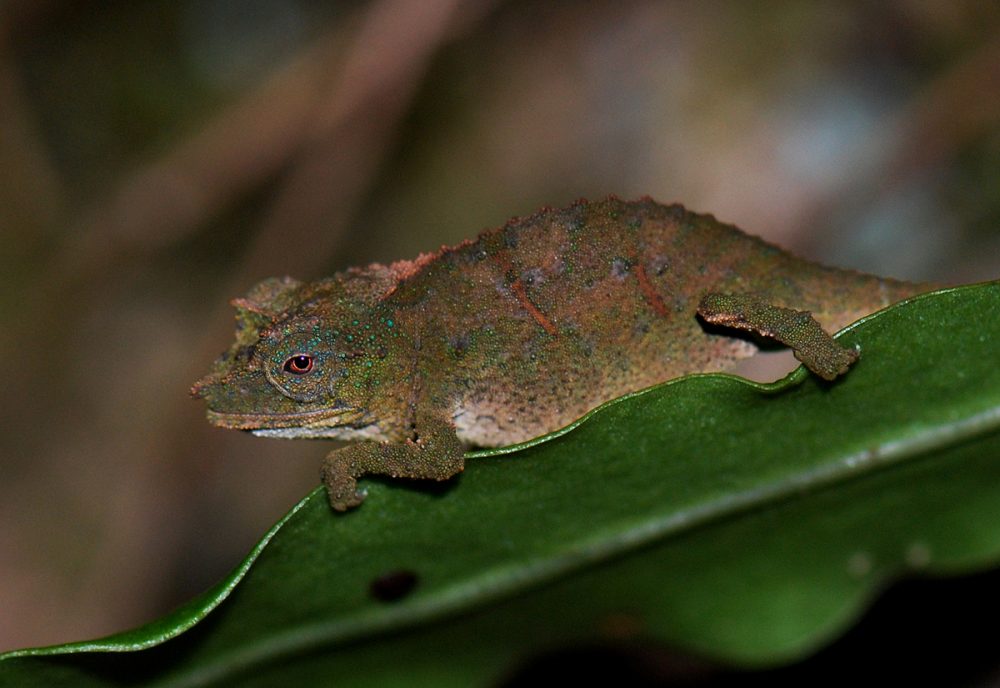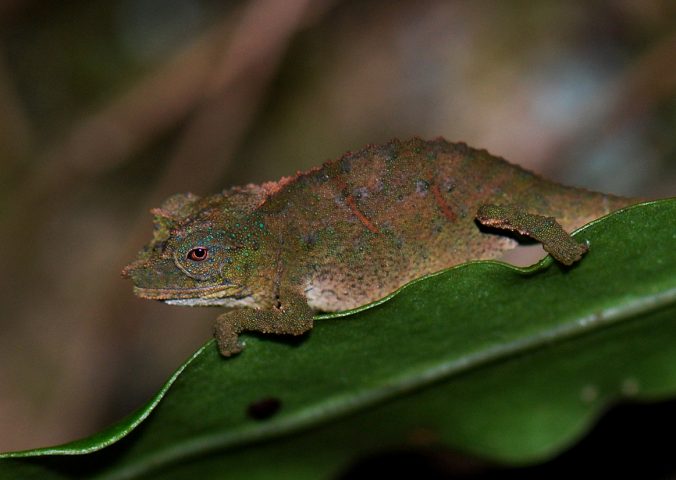About
The Mount Inago Pygmy Chameleon is a very small species of chameleon that reaches lengths of just 4-5cm! It is a very rare species which has only ever been found in one patch to date.
The Mount Inago Pygmy Chameleon is part of the pygmy chameleons or African leaf chameleon genus of Rhompholeon, which diverged from all other genera of reptiles around 43 million years ago, around the time that humans and spider monkeys shared a common ancestor during the Paleogene era.
The Mount Inago Pygmy Chameleon is found on Mount Inago in Mozambique where the major threat facing it is habitat fragmentation from land clearance for agriculture and selective logging for hardwoods by local communities. The total area of these forest patches is only 5 km2. This species is a forest specialsit and as such cannot pass between these fragmented forest areas. Given the intense pressure on the habitat and the assumed loss of ecological function of the remaining forest fragments, there is a possibility that species may even be extinct.
There is currently no species-specific conservation measures in place for this species. A survey determining the extent of the remaining forest fragments and the population density of this species is important in creating future conservation strategies. Habitat protection is also required immediately to prevent the extinction of this tiny chameleon species. If this cannot be done, translocations or captive breeding programmes should be considered.
- Order: Squamata
- Family: Chamaeleonidae
- Population: Possibly extinct
- Trend: unknown
- Size: 40-50mm
EDGE Score
Distribution
The species is found on Mount Inago, Mozambique.
Habitat and Ecology
This species lives in mid-altitude temperate forest. It is considered a forest specialist and requires an intact canopy to generate suitable forest floor leaf litter habitats. It requires a combination of low bushes for perching and leaf litter for foraging.

